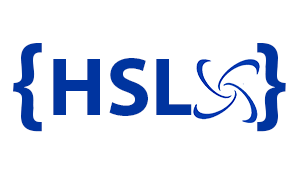How to leverage offshore or nearshore resources on IT projects

High Score Labs News • July 30, 2019
Now days, offshore and nearshore development is more and more common in the EU, US and UAE as well as other countries. However, some may be fearful or extremely cautious when using such services. This is due to previous experiences of projects that did not go well using such resources. Let’s take a moment to look at the advantages, disadvantages and the top 4 suggestions on how to successfully use offshore and nearshore resources.
Advantages
Often offshore and nearshore rates for development tend to be significantly less than what it would cost in the EU or in the US, which helps keep the cost of large digital projects within reasonable limits. In addition to this, some skill sets are typically pretty hard to find onshore, for example a Sr Sitecore or Episerver developer. By opening up to offshore/nearshore development, you increase the chances that such a resource would be found at a price that fits the projects budget. In addition, many companies tend to offer full-service work, from branding to UI/UX design to development and maintenance.
Disadvantages
Often there is a 3 to 11-hour time difference between the onshore part of the team and the offshore team, making management and keeping ahead of the work load a challenge. In addition to this, some such offshore/nearshore companies will often try and push interns/jr level people as Sr level, which can not only cause a breach of trust but negatively effect that companies reputation and the overall project. And finally, one other potential issue is the difference of language.
4 key points to keep in mind
There is however, a way to successfully setup such an arrangement and deliver quality and success. Here are 4 points to consider:
Find and maintain a relationship with a trusted partner: Having a long running relationship with an offshore/nearshore partner helps not only build trust but give you access to their team, which they have taken time to build and train. This provides and environment where they know you and how your company operates, but you also know how they operate, allowing both sides to build a well-functioning team. This also alleviates the concern of tricky business, i.e., providing vastly under qualified staff to fill Sr level roles. Also, consider visiting them in their office, since face to face communication is always a good way to build trust in the work environment.
Be flexible with time zones
Always keep in mind time zones, since these can be quite large sometimes. Always try and make sure that when the offshore/nearshore team begins work, they know what needs to be done. Also try to iron out any issues before they begin work so that they do not have to stop work to wait for you to wake up to answer. Coming to an arrangement on availability is also common, so try to keep at least a 4 hour working day overlap with the offshore/nearshore team that you use.
Learn to manage the language barrier
Learning a language other than your mother tongue or the languages that were spoken at home when you were little can be difficult. Sometimes, for example, a developer that has Jr to mid-level English, may spend more time mentally trying to translate each spoken word and understand the accents, that they fail to remember all the details. Instead of insisting on verbal communication, try ensuring the following:
- Use an IM system like slack, teams, etc, to communicate. It provides a written record and the option of translating what words or expressions they may not be familiar with
- Ensure that requirements, tickets, etc, are documented and understood by the team ahead of time where possible
- Try to avoid unnecessary verbal communication, especially without any backing written/typed communication
- NOTE: most developers, even fluent English speakers, work better when they are not disturbed unnecessarily anyway
Hybridize the team
Some prefer to use offshore/nearshore as a more of a ‘fire and forget’; definitely not recommended. Instead try to ensure that at least the senior team members are onshore. They will be the buffer that communicates with the client and ensures that the team understands what needs to be done. This onshore team is usually at least a lead developer and a PM; however, it could be larger or smaller as needed. This ensures a smooth, consistent experience for the client as they do not have to worry about time zones or language differences and also ensures that you keep control of the project from start to finish.
At High Score Labs, we have years in experience in just such an arrangement, using offshore and nearshore development strategically to enhance the quality of a project. We believe in building the right team with the right people and managing it in a way that ensures project success and client satisfaction. Feel free to reach out to us and see what we can do for you!




